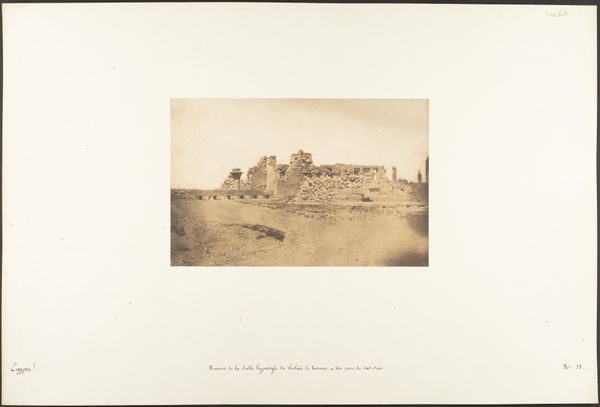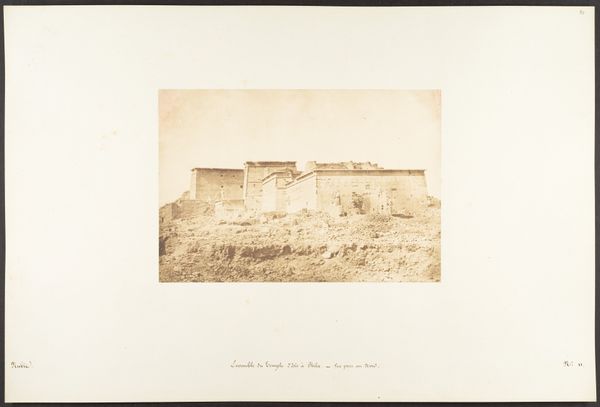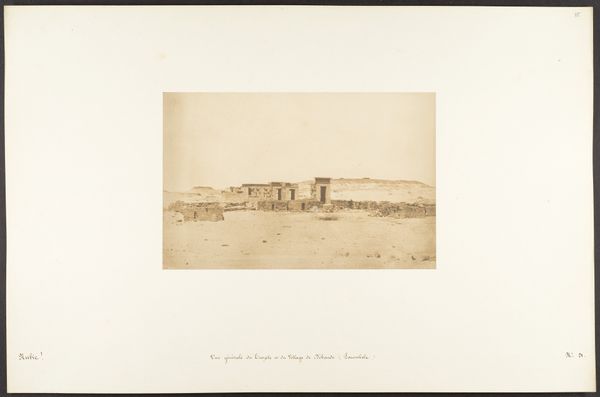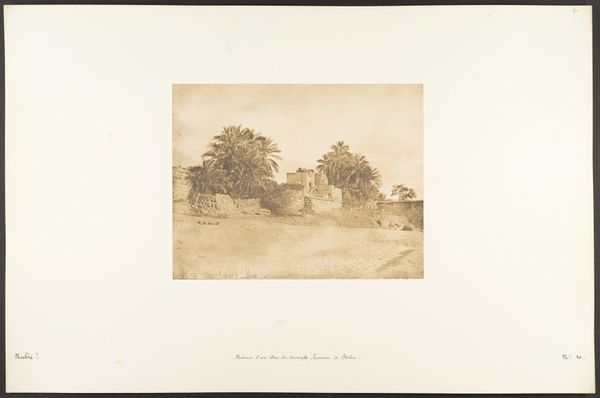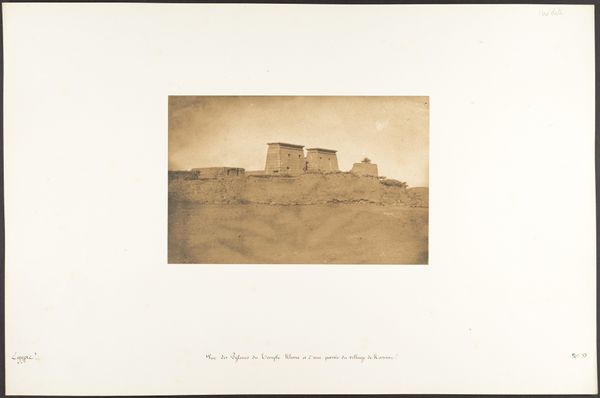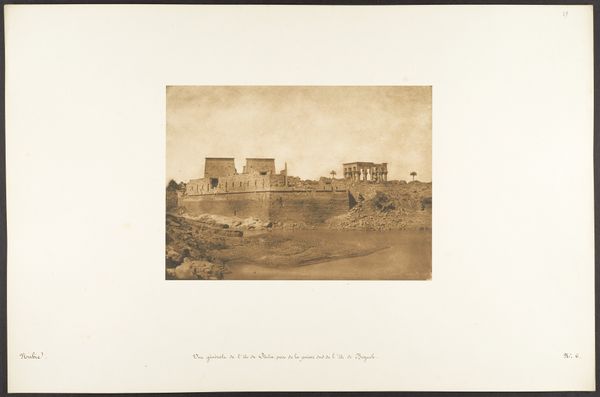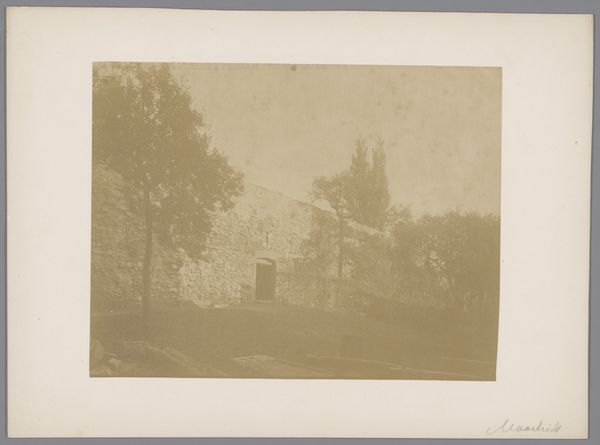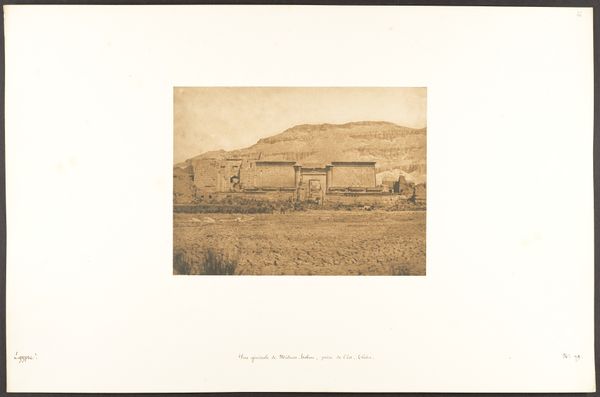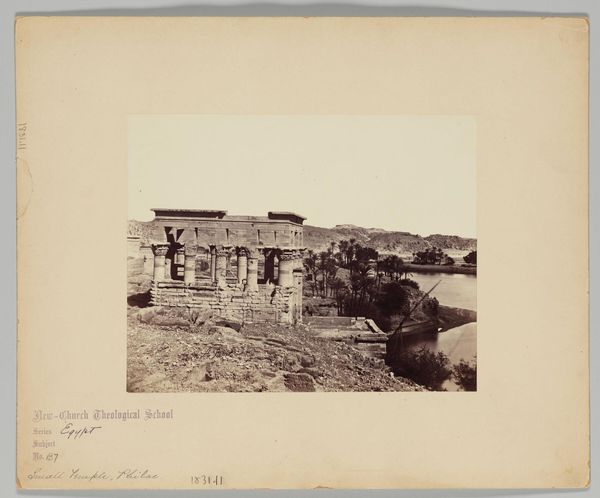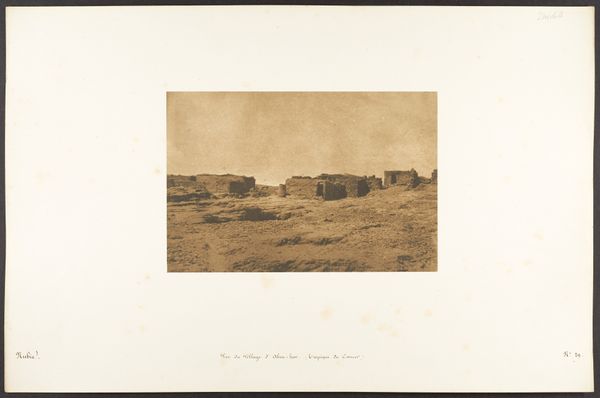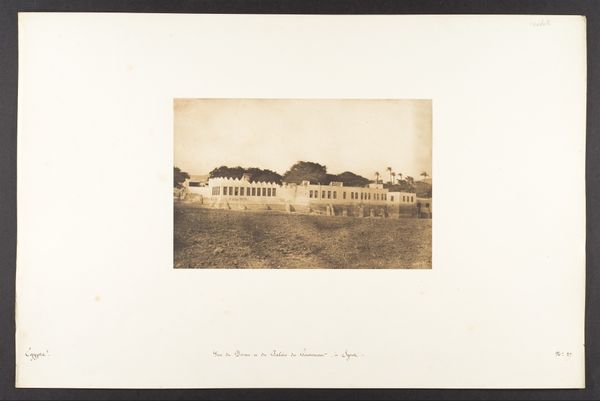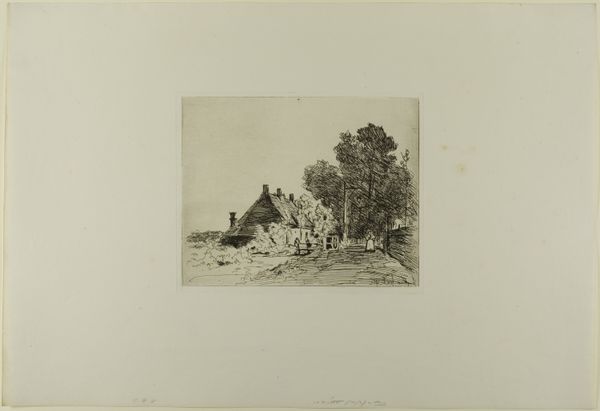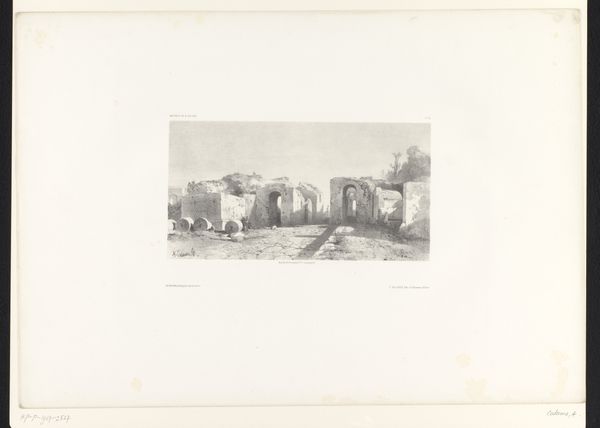
Tombeau de Hadji-Abdallah-el-Marabout, à Herment 1849 - 1850
0:00
0:00
photography, gelatin-silver-print, architecture
#
landscape
#
photography
#
gelatin-silver-print
#
islamic-art
#
architecture
Dimensions: Image: 6 1/4 × 8 1/2 in. (15.8 × 21.6 cm) Mount: 12 5/16 × 18 11/16 in. (31.2 × 47.5 cm)
Copyright: Public Domain
This is Maxime Du Camp’s photograph, “Tomb of Hadji-Abdallah-el-Marabout, in Herment,” part of his travels in the mid-19th century. Du Camp, traveling with Gustave Flaubert, was commissioned to document Egypt, reflecting France's colonial interests in North Africa. The photograph presents us with a stark, sun-drenched scene: a tomb of a marabout, a Muslim religious leader, standing in the desolate landscape. What does it mean to capture the tomb of a religious figure through the lens of colonial ambition? Du Camp's work, while aiming for documentation, inevitably carries the weight of cultural and political power dynamics. There is an emotional tension here, between the quiet dignity of the tomb and the implied presence of the colonizer's gaze. As you consider this image, think about what stories are told, and perhaps more importantly, what stories remain untold. How do the power dynamics inherent in the colonial project shape what we see and how we interpret it?
Comments
No comments
Be the first to comment and join the conversation on the ultimate creative platform.
